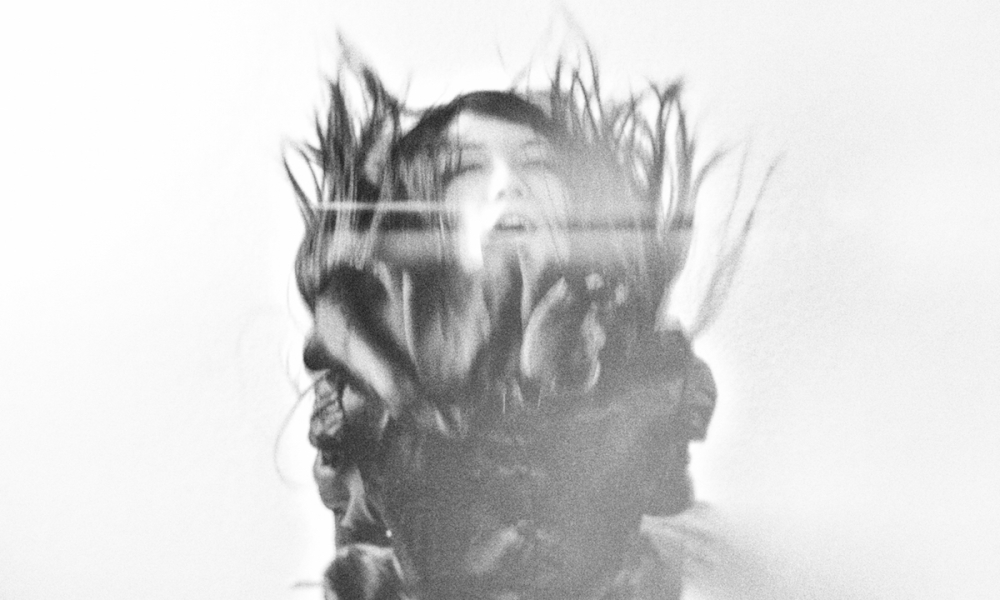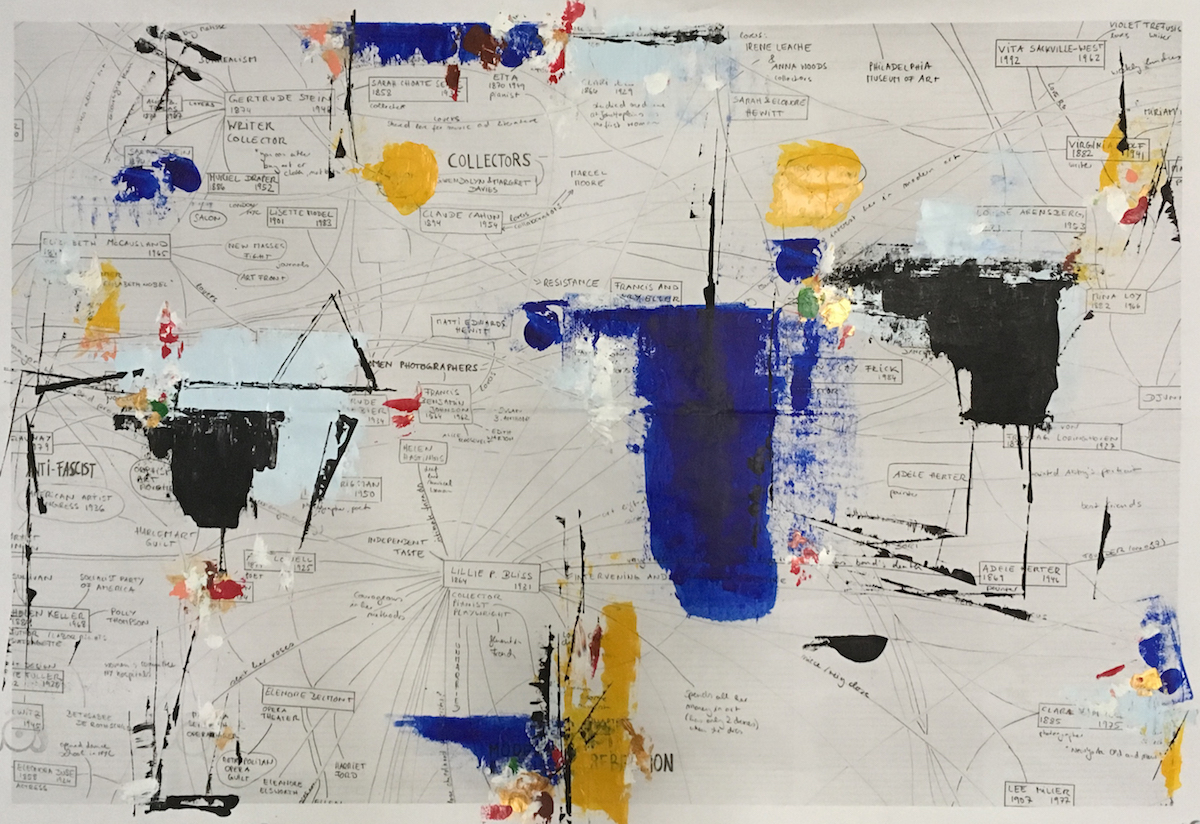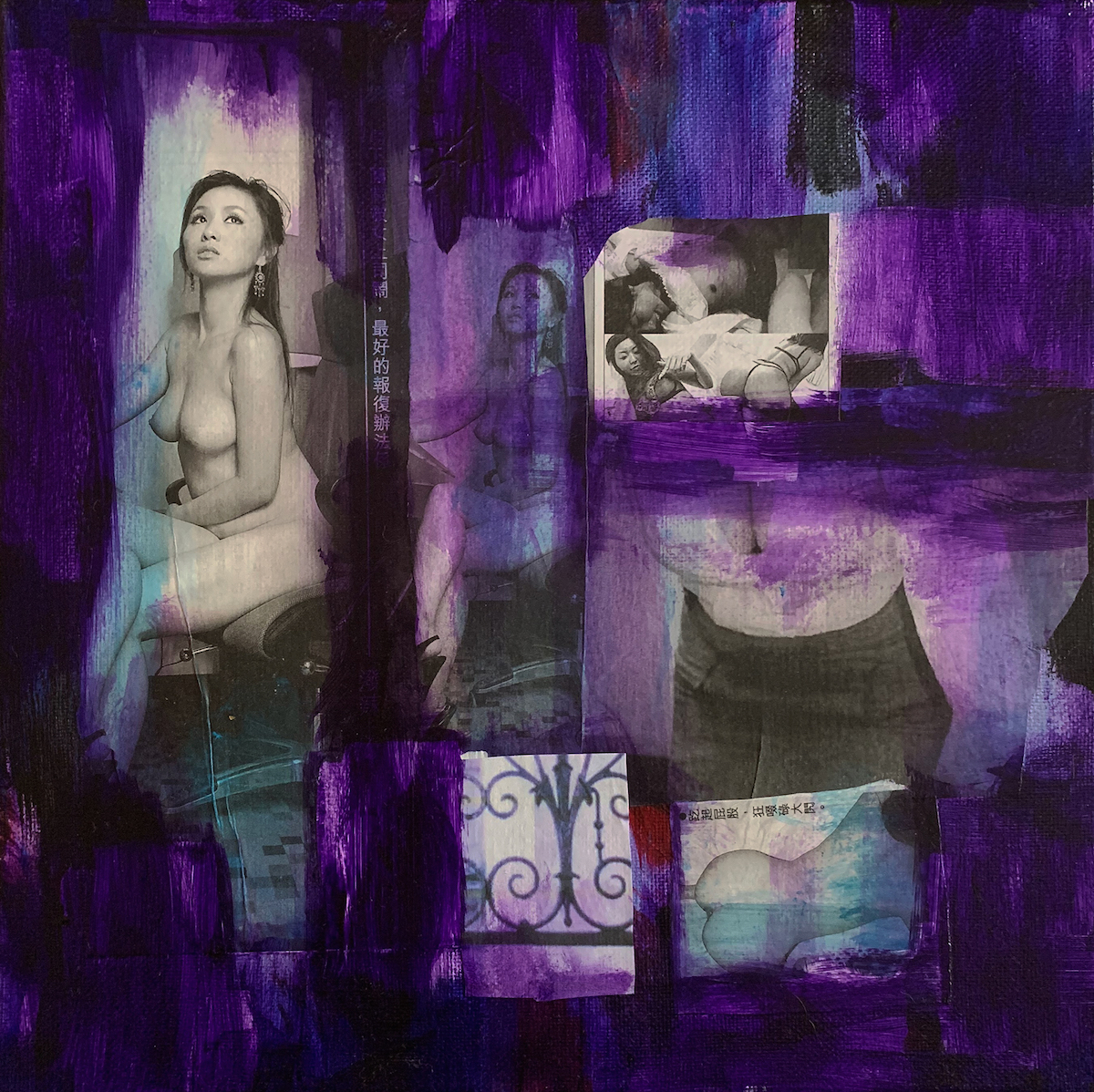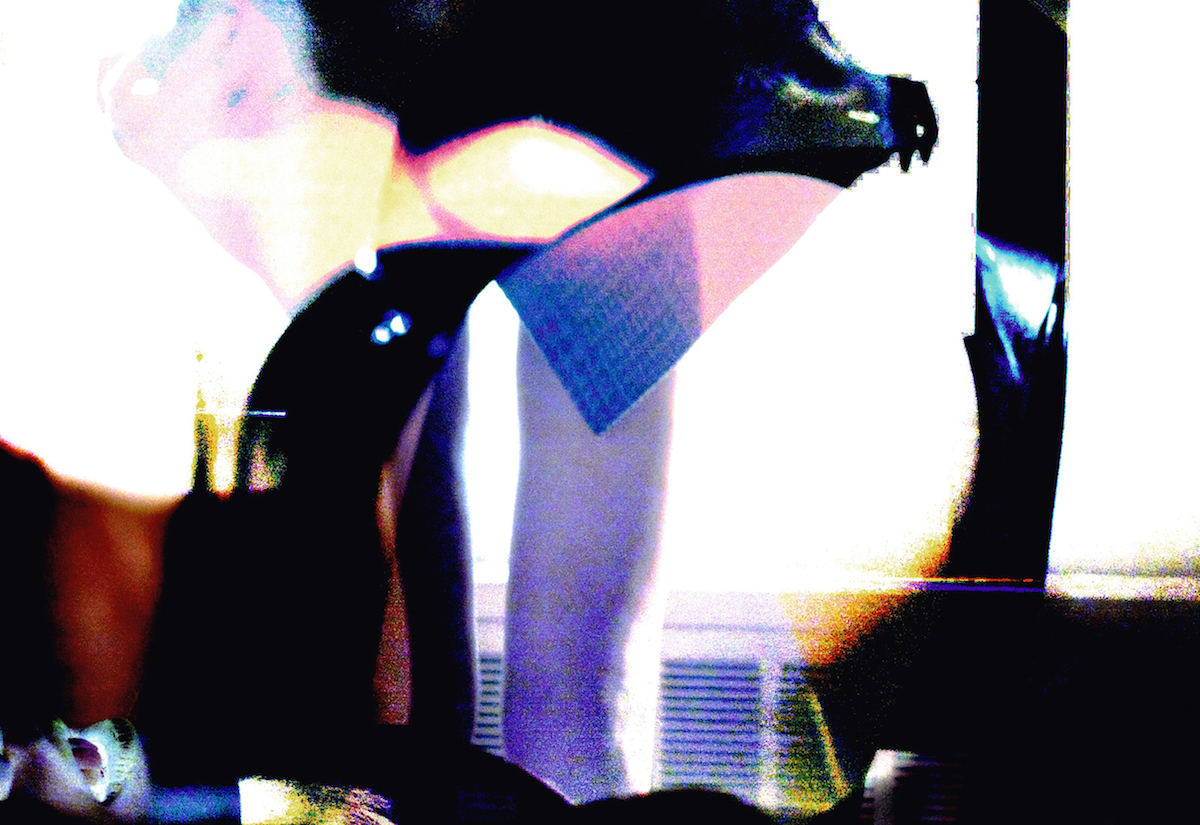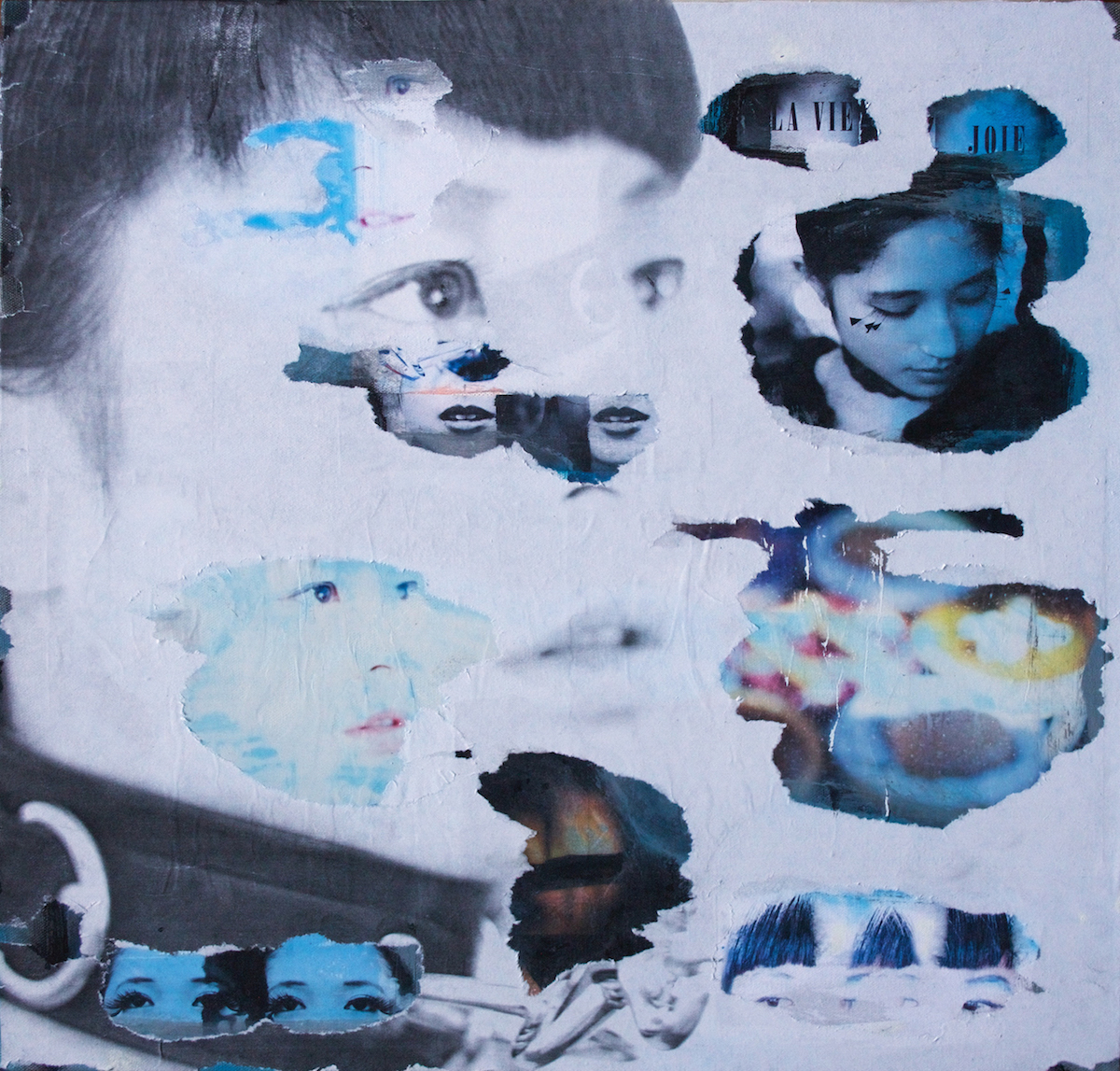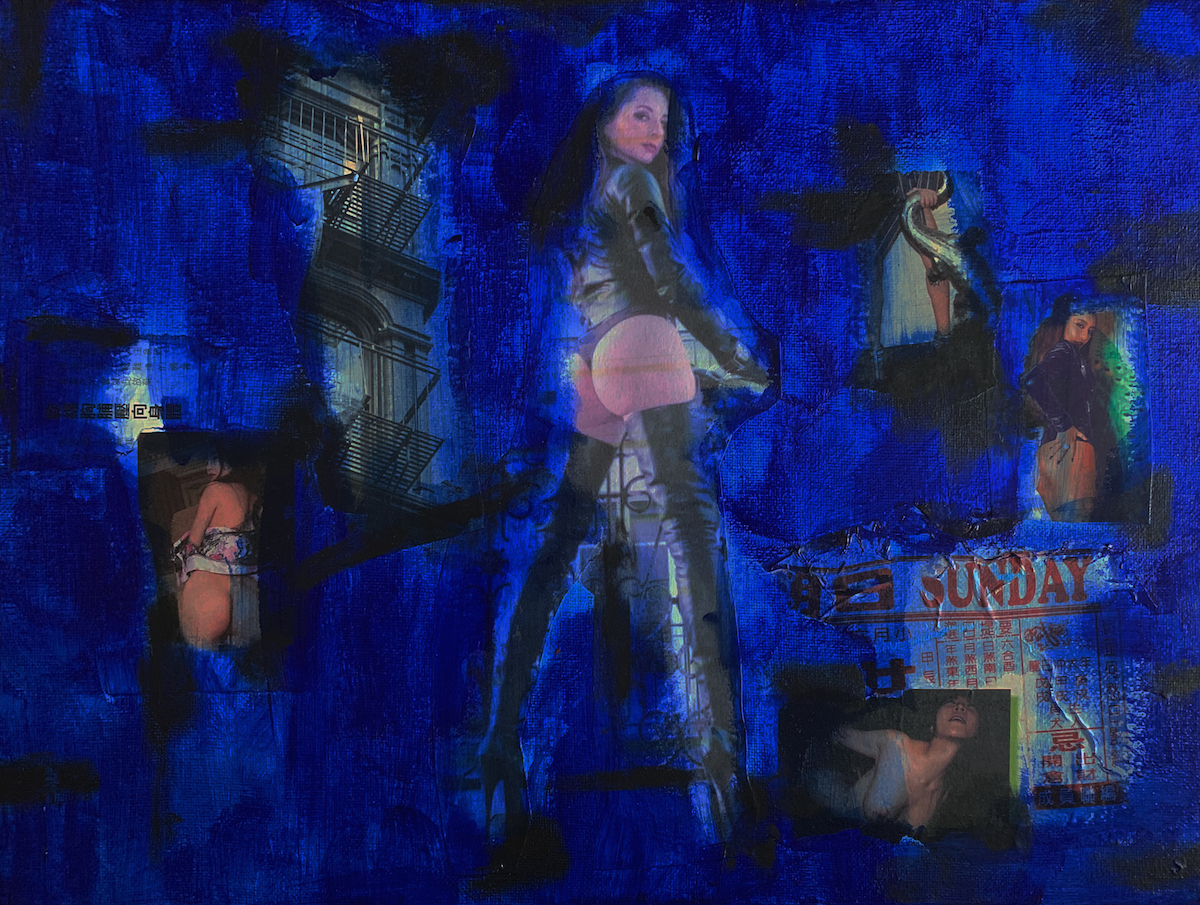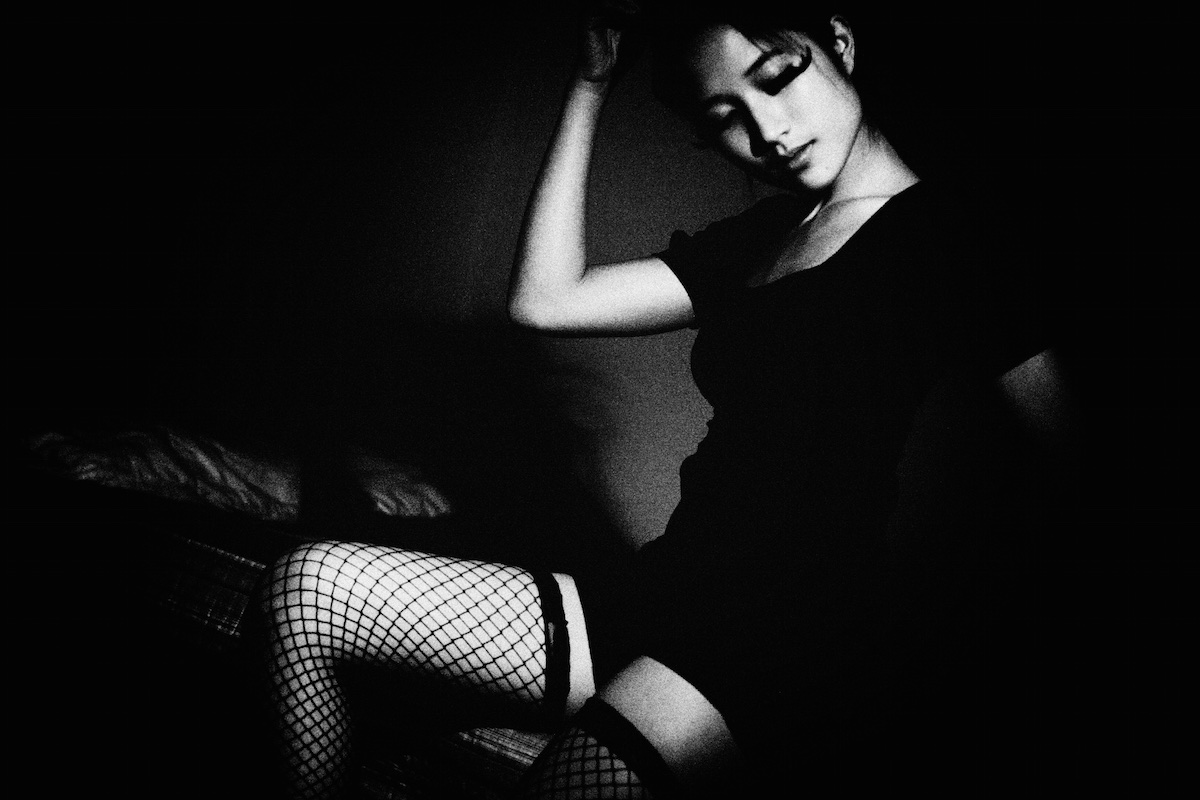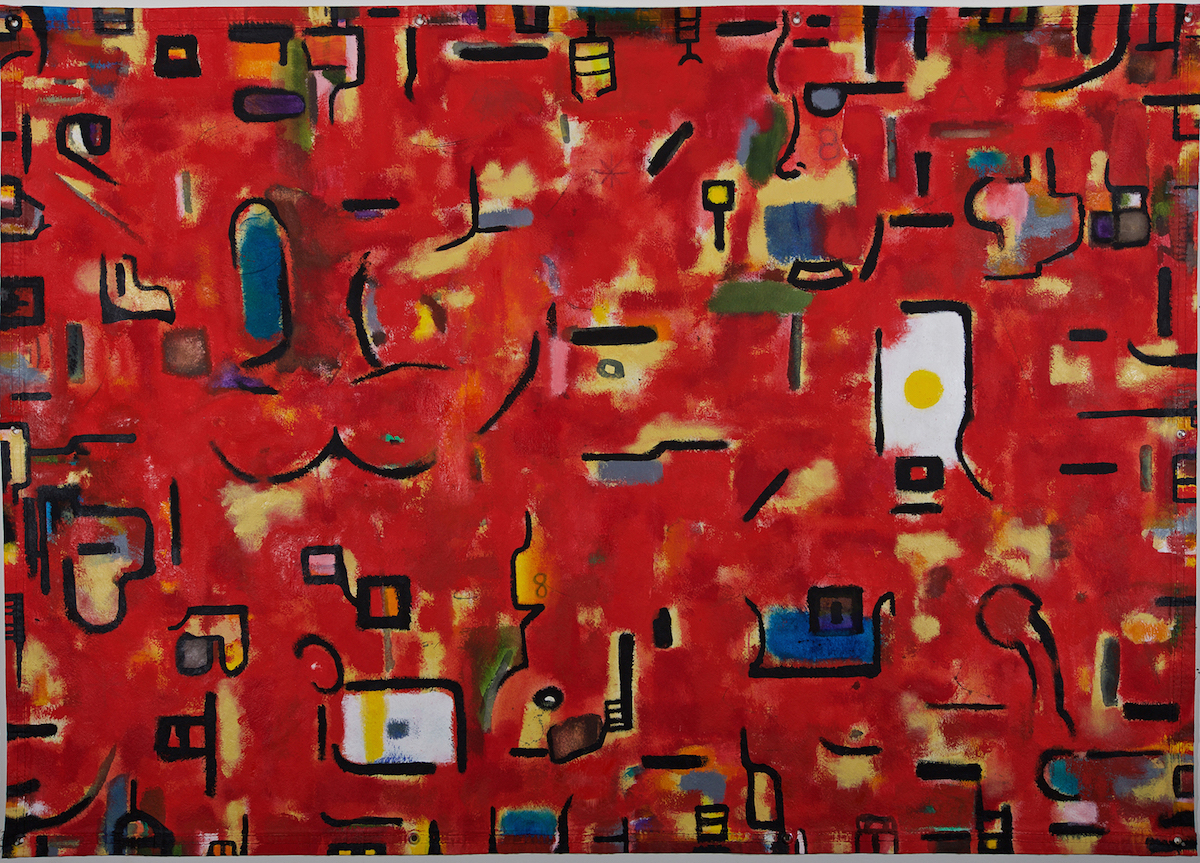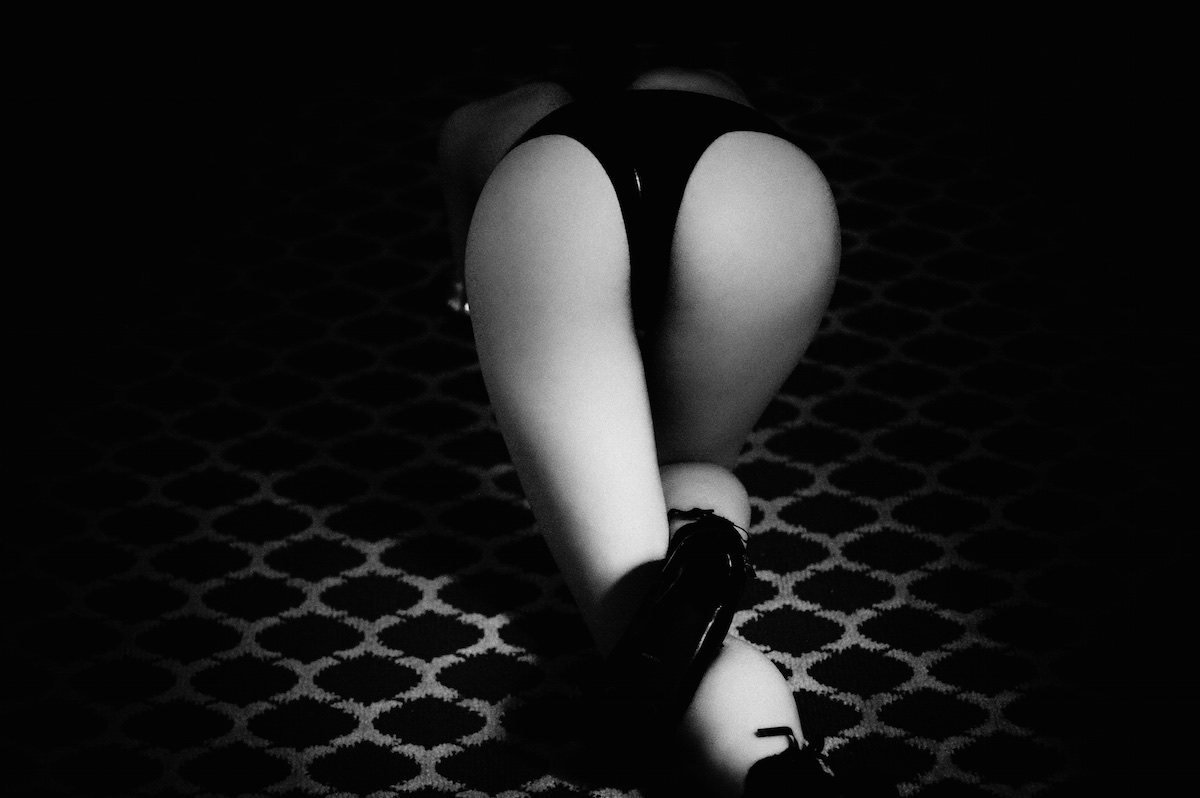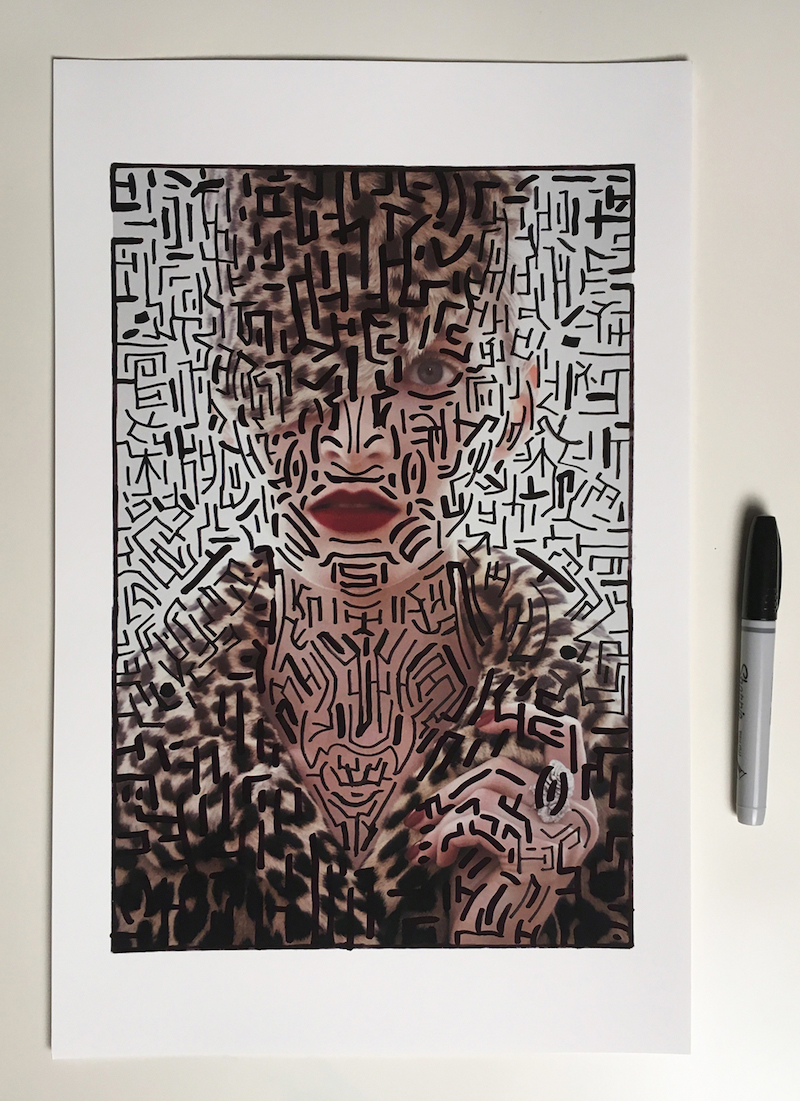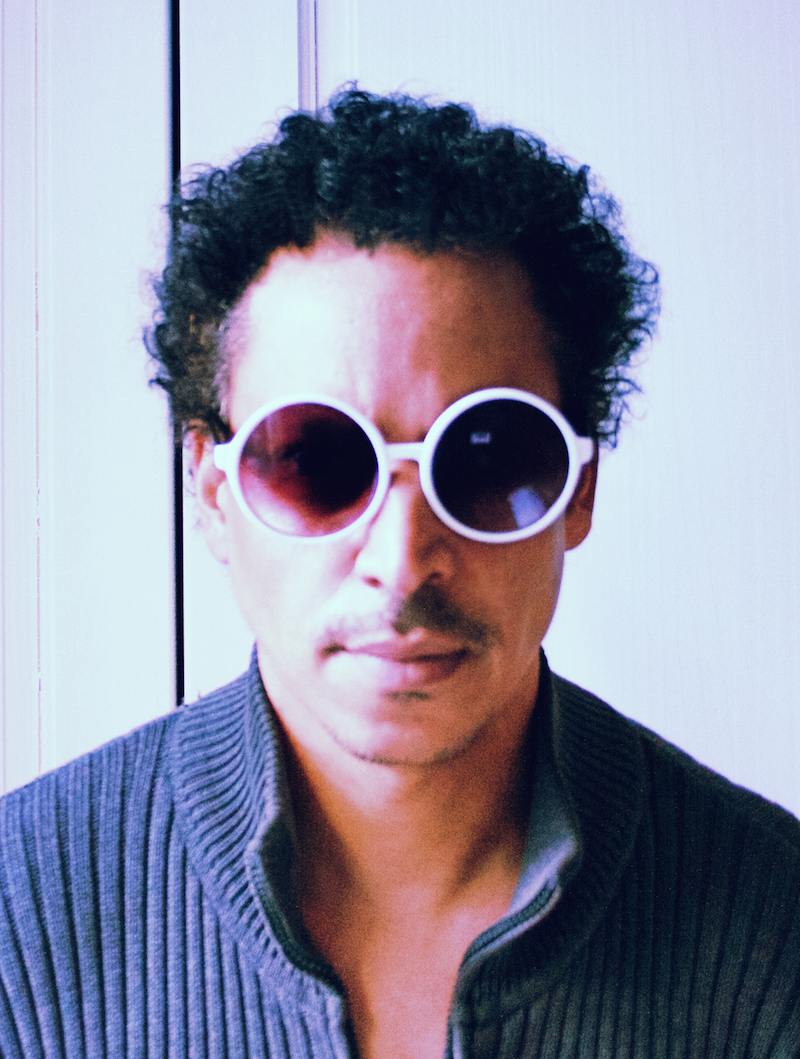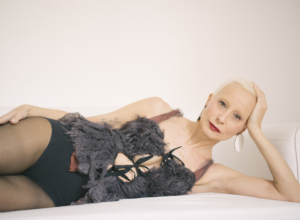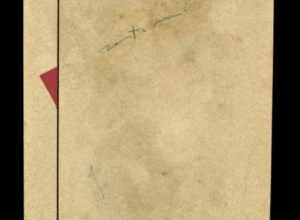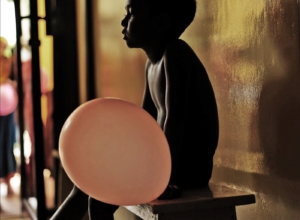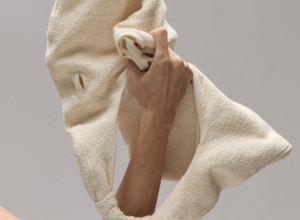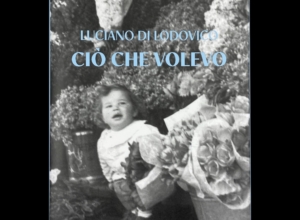L’artista americano The Mazeking 飛龍 (Gabriel Asoka) è noto per le sue opere d’arte colorate, audaci e provocatorie. Traendo ispirazione da tutto, dagli incontri quotidiani, dai sogni e dalla storia, crea lavori diversi: da quelli a olio su tela a quelli ad acrilico su carta. In questa intervista mi parla della sua poliedrica pratica artistica offrendo un racconto approfondito della sua poetica.
American artist The Mazeking 飛龍 (Gabriel Asoka) is known for creating colorful, bold, and provocative artworks. Inspired by everything from daily encounters to dreams and history, he creates various works, ranging from oil on canvas to acrylic on paper. In conversation with me the artist discusses his multi-faceted practice offering deep insight into his poetics.
The Mazeking, Consciousness 16, acrylic, gesso on thick newsprint paper
Francesca Interlenghi: Fin dagli inizi, nel 1998, hai sviluppato un preciso vocabolario visivo che si basa su una serie di temi tra cui la coscienza, la sessualità e il mistico o l’esoterico. C’è qualcosa in particolare che ti ispira o che ti influenza nel momento in cui decidi di entrare nel tuo studio per creare?
The Mazeking 飛龍 Gabriel (Gabriel Asoka): Sì, ogni volta che dò inizio a un’opera d’arte ho una visione chiara di ciò che sto creando e del perché lo sto creando. A volte ho in mente un colore chiave, un colore che racconta una storia o crea un’atmosfera. Altre volte ho in mente semplicemente il significato e il tema dell’opera e poi la struttura arriva di conseguenza, sicché tutto si incastra alla perfezione, ma due o più di queste componenti sono sempre presenti.
Francesca Interlenghi: Since the beginning in 1998, you have developed a distinct visual vocabulary that draws upon a wide variety of themes including consciousness, sexuality, and the mystical or esoteric. When you are in the studio making works, do you begin with a particular inspiration or influence?
The Mazeking 飛龍 (Gabriel Asoka): Yes, each time I’m about to make an artwork I have a clear vision of what I’m creating and why I’m creating it. Sometimes I have a key colors in mind, A color which tells a story or sets a mood. Other times I simply have the meaning and theme and then the structure comes and it all falls into place, but two or more of these are always present.
The Mazeking, Saturday Hong Kong Morning, acrylic, paper on canvas
Francesca: Risulta difficile attribuire etichette al tuo lavoro o inquadrarlo dentro una categoria specifica, del resto tu stesso rifiuti di conformarti a qualsiasi sistema di pensiero, costruzione teorica o ideologia totalizzante. Come descriveresti il tuo approccio e la tua attitudine?
The Mazeking: E’ vero che non mi importa delle etichette, almeno dal punto di vista astratto o teorico. Sono semplicemente frutto di invenzioni che io ritengo false e limitanti dell’arte intesa come atto creativo di per se stesso. Le etichette confinano non solo gli artisti, ma anche il risultato del loro lavoro e non da ultimo la prospettiva del pubblico, rinchiusa essa stessa dentro questa sorta di perimetro delimitato appunto dalle etichette. Certo, una fotografia è una fotografia ma il significato, il messaggio e l’immagine che da essa scaturiscono sono gli elementi cruciali dell’opera e non il modo in cui è stata realizzata. Eppure nel mondo dell’arte si spende molto tempo e molta energia a parlare di cosa è fatto qualcosa, si attribuisce un’importanza fondamentale ai materiali ma non credo debba essere così. Ciò che conta è lo spirito di un’opera, i sentimenti che la muovono, la sua narrazione e non se è fatta di legno, di tela o di carta. Vedere e comprendere l’arte è semplicemente il momento conclusivo di un processo più complesso. Una persona vede un’opera e gli può piacere oppure no, la può amare oppure no come è normale che sia. Dipende semplicemente da quello che allo spettatore arriva dell’opera in quel determinato momento della sua vita in cui la contempla.
Francesca: We cannot neatly place any labels or categories upon your work, as you refuse to conform to any systems of thought, theoretical constructions, or totalizing ideologies. How would you describe your approach and attitudes?
The Mazeking: That’s true I don’t care for labels, such as abstract or something. They are simply created inventions which I find false and limiting to art creating itself. They box not only the artists in, but they box and limit the art made and even the audiences perspective is narrowed by these walls (labels). Yes, a photograph is a photograph but the meaning, message and image itself is the key not how it’s made. Yet many in the art world spend a great deal of time and energy talking about what something is made out of, and pointing to the materials as the key to art and I just don’t believe that to be the case. It’s the mood, feeling, narrative and so on that matters, not if it’s made from wood or canvas or paper. When is comes to people seeing and understanding art, I think it’s simple at the end of the day. A person sees an artwork and I either they like it, enjoy it or love it or they don’t, and either experience is okay and normal and needs no defense. It’s simply what they get or don’t get at that time in their life from that single work of art.
The Mazeking, Peekaboo Daylight Moment Blue, pigment on rag paper
Francesca: Attraverso opere d’arte che sono – come dici tu stesso – “astratte per un certo verso e figurative per un altro verso”, indaghi i concetti di equilibrio e dualità, creando il senso di quello che tu chiami il “doppio legame”. Potresti spiegarlo più nel dettaglio?
The Mazeking: Sì, lo dico spesso. Quando ero un bambino, avevo circa sei anni, ho iniziato a entrare in contatto con lo Yoga, il Buddismo e lo Zen. Il concetto di doppio legame deriva infatti dal buddismo Zen. In seguito, dopo mesi di meditazione, ho iniziato a chiedermi: “Come si arriva a distaccarsi dalle cose materiali?” Stavo meditando su temi come la perdita, il distacco, l’assenza di desiderio, il non attaccamento alle cose: alle automobili, al denaro, all’arte, al cibo, ecc. Ci ho riflettuto per giorni arrivando alla conclusione che se mi concentro sul non essere attaccato alle cose allora divento attaccato al pensiero di non essere attaccato, che di per sé è una forma di attaccamento. Ecco perché parlo di doppio legame. Da allora e da quell’esperienza ho trovato la mia strada andando oltre il concetto di doppio legame che è insito nella comunicazione e riguarda non solo quello che diciamo o sentiamo al di fuori di noi noi ma anche quello che risiede dentro di noi, il dialogo con noi stessi. Perché ciò che davvero conta è ciò che sta nella nostra mente, i nostri pensieri.
Francesca: Through artworks that are – as you yourself say – “abstract in a way and representational in another way”, you investigate ideas of balance and duality, creating a sense of what you call the “double-bind”. Could you elaborate a little bit on this notion?
The Mazeking: Yes I do say that and often. When I was a little child, around 6 years of age I started exploring Yoga, Buddhism, Zen and things like that. The double-bind comes from Zen Buddhism. Anyway a few years later after meditating for many months I came to question in my own mind, “How do I not have attachment?” I came to this thought because I was meditating upon losing or not being attached, without desire, without attachments to things like cars, money, art, food, etc. So I thought about this for days, I had figured out that, if I focus on not being attached, then I become “attached” to “not being attached”, which in itself is attachment.” For me that was a double-bind, as I think it is for many people. Since then and from that experience I found my way beyond that mindset and that double-bind. This double-bind thing lives in communication, but not just the what we say or hear to others outside ourselves, but also our internal communication and conversations within ourselves. What’s on our mind real matters, our thoughts are key.
The Mazeking, Painting from January series, acrylic, paper on canvas
Francesca: Come sono venuti alla luce i tre elementi fondamentali delle tue opere: Bellezza, Equilibrio (dualità) ed Energia?
The Mazeking: In un certo senso non li ho cercati per davvero. Quando ho iniziato a dipingere ho semplicemente dato spazio alla spontaneità, senza cercare di pensare o fare. Volevo solo dare concretezza all’idea di esistere, semplicemente lasciando fluire quello che doveva fluire. Dopo alcuni mesi spesi dedicandomi alla pittura, mi sono reso conto che il mio lavoro ruotava intorno a questi tre concetti, gli stessi che avevano permeato tutta la mia vita. L’idea di equilibrio contiene in sé quella di doppio legame: due lati opposti e un punto centrale dal quale tutto è equidistante e uguale. Lo stesso dicasi per la bellezza: non si può capire la bellezza senza capire ciò che bello non è. Infine è arrivata l’energia, l’amore della mia vita. L’energia, quella che illumina le città, quella che scorre dentro i nostri corpi e crea e distrugge i mondi. Mi interessava l’energia quando ero piccolo, quando meditavo o facevo yoga. Quindi è naturale che tutti questi concetti siano diventati centrali nella mia produzione artistica così come centrali sono sempre stati nella mia vita.
Francesca: How did the “three keys” Beauty, Balance (duality), and Energy come about in your artworks?
The Mazeking: In a way they didn’t really come about. When I started painting I just painted what came out, without trying to thinking or do. I was applying the idea of being, simply allowing what needs to be expressed, to be expressed. After a few months of painting I realized that my work was about these three things, and it made sense because my entire life has been about these three interesting things. Balance, has in it the double-bind, it is three points, this side, the other side and the center point, where all is equal and the same. It’s the same with Beauty, one can’t understand beauty without what is not. Then came energy, the love of my life. Energy, that which lights cities, runs in our bodies and creates and destroys worlds. I was interested in energy and all of these when I was little, when meditating or doing yoga. So it was natural that they became central in artwork as in my life.
The Mazeking, Saturday Hong Kong Fridays
Francesca: A volte hai distrutto le tue opere d’arte attraverso un rituale che prevedeva di bruciarle dichiarando: “fa parte del processo di creazione e ricostruzione delle opere”. Pensi che l’opera d’arte scateni tutta la sua forza nella tensione che si crea tra produzione e distruzione, quiete e movimento? Bruciando le opere intendevi in qualche modo rendere dinamica l’immobilità della tela?
The Mazeking: Non lo so. Per quel che riguarda me e le mie opere, distruggo solo quelle che non ritengo abbastanza buone. Ci sono stati momenti in cui per qualche ragione ho accelerato il mio processo creativo accorgendomi e capendo solo in seguito che il risultato non era buono, che non era conforme ai miei desideri o alla mia visione e allora in quei casi ho scelto di distruggere le opere. Solo alcune le ho bruciate e solo perché nutrendo per loro un grande rispetto volevo sottoporle a una specie di rituale. Altre, per esempio, le ho semplicemente tagliate.
Francesca: You have even destroyed artworks via an artistic burning-ritual which you have stated “is part of the process of creating and re-creating works”. Do you think the artwork unleashes all its force in the tension that is created between production and destruction, stillness and movement? Can the burning-ritual activate the immobility of the canvas?
The Mazeking: I don’t know. In my case and that of my artworks, I destroy only the works that are not good enough. There have been times when I’ve rushed my process for whatever reason, only later to see and know that the work was not good, not true to my wishes or vision and in those cases I make the choice to destroy them. As for the burning ritual, I’ve only burned a few works of art at this point, those where burned because I had great respect for them as works and want to give them a ritual, to show respect. The other works I just cut and shred.
The Mazeking, foto-artwork from BW foto art series
Francesca: Dai tuoi dipinti colorati ed esuberanti emerge il tuo interesse per ciò che ti porta felicità e il tuo desiderio di condividere quella felicità con gli altri. Potremmo dire che la vitalità umana è un fattore indispensabile per comprendere il tuo lavoro?
The Mazeking: Grazie per questa osservazione. Vorrei rispondere di sì, che la vitalità umana è indispensabile per comprendere il mio lavoro, ma la verità è che sono solamente attratto dall’energia e il colore è il modo in cui io la rappresento. Poiché non posso controllare cosa o come gli altri vedono il mio lavoro o il modo in cui scelgono di interagire con me, semplicemente evito di stabilire aprioristicamente dei criteri. Vorrei che le mie opere arrivassero a tutti, certo, ma siccome non è qualcosa che posso stabilire io allora non me ne preoccupo.
Francesca: In your colorful, exuberant paintings we can perceive your interest in things that bring you happiness and your wish to share that happiness with others. Is human vitality an indispensable factor to grasp your work?
The Mazeking: Thank you for seeing that. I would like to say, “yes human vitality is indispensable in grasping my work” but the truth is I simply love energy and color represents that aspect to me. Being that I can’t control what or how others see or choose to interact with me work, I simply have no prerequisite for anyone to connect or not to any of my work. While I’d like everyone to get it, like it, it’s not something I can do anything about, so I simply don’t consider it.
The Mazeking, Opus #5 Breakfast on 125th Street
Francesca: Uno degli aspetti più interessanti della tua poetica è la possibilità che le tue opere si manifestino sempre in forme diverse. Non ti consideri un fotografo, ma un artista che utilizza il medium in favore dell’arte. Come sei arrivato alla fotografia?
The Mazeking: Esatto, non sono un fotografo. So molto di fotografia, della sua storia, degli obiettivi, dei corpi macchina, conosco lo stop F o lo stop T ecc. Ma tutte queste cose riguardano la tecnica. Quando dico che non sono un fotografo, intendo dire che ciò che davvero mi interessa è l’intenzione. La mia intenzione non ha nulla a che fare con la creazione, con la creazione di una fotografia o con i suoi aspetti tecnici. Sono interessato alla luce e molto spesso al colore, che è energia. Quindi fotografando voglio creare un’immagine che riesca a rendere evidente il concetto o il tema che ho scelto ma non mi concentro sulla fotografia, sulla sua storia o i suoi processi. Mi interessano la luce (bellezza), le forme (equilibrio), il colore (energia) che il dispositivo può aiutarmi a creare, tutto qui.
Francesca: One of the most interesting aspects of your poetics is the possibility for your works to always manifest themselves in different forms. You don’t consider yourself a photographer, but an artist utilizing the medium for art. How did you come to photography?
The Mazeking: Yes, I’m not a photographer. But I know lots about photography, its history, lenses, camera bodies, F-stops, T-stops, etc. But that’s all about knowing the tools. When I say I’m not a photographer what I’m really pointing to is ones intention. My intention has nothing to do with making, creating a photograph or the technicals. I’m interesting in light and many times color to, which is energy. So I’m making a image that says something about my theme or interest, not anything about photography or its history or processes. I’m just after the light (beauty), shapes (balance), color (energy) the device can help me create with, that’s all.
The Mazeking, foto-artwork from BW foto art series
Francesca: Quali sono gli altri strumenti con cui stai sperimentando la tua arte?
The Mazeking: Non mostro opere d’arte che considero frutto di sperimentazione, vorrei essere molto chiaro nel rispondere a questa domanda. Avvalendomi di molti medium diversi, non faccio uscire dal mio studio lavori che considero frutto di tentativi anzi, la maggior parte di quelli li distruggo proprio perché sono il risultato di un processo di apprendimento e io credo che un artista debba mostrare ciò che ha imparato e non ciò che sta imparando. Solo quando ho raggiunto un certo livello di padronanza del medium allora esibisco l’opera che con quel mezzo ho creato. In questo momento sto perdendo tempo con alcuni nuovi tipi di vernici e lavorando con alcuni nuovi tipi di luci. E mi sto interessando ad alcuni modellini di missili per capire cosa posso fare con gli oggetti relativi allo spazio. Adoro l’idea di fare arte nello spazio.
Francesca: What are some of the other (mediums) you’re experimenting with?
The Mazeking: I don’t show artworks from my experiments, I’m attempting to be clear in answering this question. While I do practice and experiment with many mediums, none of the pieces that come from those experiments will be seen by anyone outside my studio, I destroy most of them because they come from the process of me learning a medium, and I feel that it is better for an artist to show what he or she has learned rather than what he or she is learning. So I only show artworks in mediums that I feel I have some level of mastery of. Right now I’m messing around with some new types of paints and also working with some new types of lights. I’m also working out some model rocket stuff to see what I can do with space relate stuff. I love the idea of making art in outer space.
The Mazeking, Fashion Maze Series, ink, pigment on rag paper
Francesca: Stai usando nuovi medium o forme o processi per la realizzazione delle tue prossime opere?
The Mazeking: Sì, sto lavorando a un progetto cinematografico. Lo chiamo cinema, non film, perché è il mio modo di dire che mi interessano le immagini, non una narrativa o una cosa elaborata strutturata in tre atti come molti film degli ultimi settant’anni. Agli inizi della mia carriera di artista ho anche lavorato a Hollywood per guadagnare soldi che mi dessero da vivere e ho cercato di realizzare dei film, ma il mio interesse era più puro, era diretto alle immagini e non al raccontare una storia. La storia può essere interessante per gli altri, quanto a me l’unico mio vero interesse è per l’immagine. Che è quello che chiamo Cinema. È luce ed energia in movimento.
Francesca: Are you using any new mediums or forms or processes in upcoming artworks?
The Mazeking: Yes, I’m working on a cinema project. I call it cinema, not movie, because its my way of saying that I am interested in images, not a narrative or three act structured processed thing, such as many movies of the past 70 years. I worked in Hollywood to make money to live when I was starting off as an artist, and even tried to get films made, but my interest was more pure, it was upon the image not a story. So Hollywood and that aren’t that much of a mix. Story is nice for other people, but for me, I’m interesting completely in the image. Which is what I call Cinema. It’s light and energy in motion.
The Mazeking, Foto-artwork from the "Sunday Vignettes" series, pigment on paper
Francesca: Progetti per il prossimo futuro?
The Mazeking: Parteciperò a una mostra collettiva qui a New York City il prossimo autunno e sto ancora decidendo quali opere esibire. Sto poi lavorando a due progetti cinematografici che girerò quest’estate e che proietterò da qualche parte una volta terminati. Sono quasi tre anni che mi ci dedico, hanno preso forma nella mia mente e nei mie appunti, perciò sono piuttosto emozionato all’idea di mettermi al lavoro e vedere cosa succederà.
Francesca: Do you have any upcoming projects?
The Mazeking: Yes I have a group show here in New York City this Autumn, which I’m still thinking about which of the new works to show. I’m also working on two cinema projects, which I will be filming this summer and will screen somewhere when done. I’ve been working on these two cinema pieces in my mind and notebooks for almost 3 years now, in many ways even longer, so I’m getting rather excited to see these happen and to see works themselves.
Portrait of Gabriel Asoka, aka The Mazeking
Cover story: The Mazeking, Silhouette Awareness, pigment on rag paper, edition of 1
My special thanks to Gabriel Asoka, aka The Mazeking, who kindly gave the interview to me: web site – Instagram


